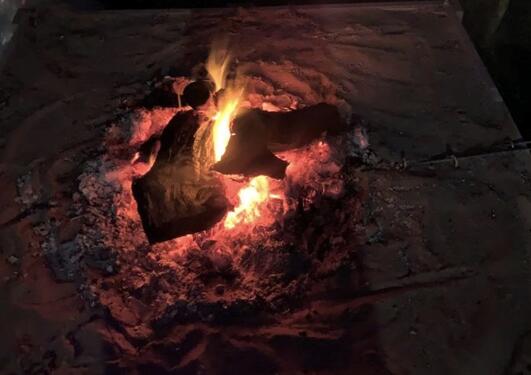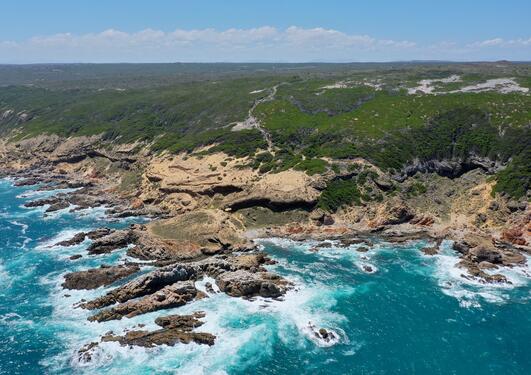Valuable leftovers
Certain animals inhabit very specific ecological habitats. The environment during the time of occupation can be reconstructed through the presence of, and changes in, species at a site. Knowing the season of shellfish collection has proven to be very important to understand the subsistence and settlement patterns of early modern humans.

Main content
Faunal analysis entails examining the leftovers from people’s hunting and gathering activities. These typically consist of fragments of bone and shells. At the most basic level of analysis, these are, where possible, identified to species and quantified, giving us an indication of what the humans ate and how they used available resources in the past. The species present also allows us to think about what technology people used in the past to get their food. For example, if a site contains the remains of mostly small animals such as hares and hyraxes, this could point to the use of snares to catch them.
Reconstructing the palaeoenvironment
The presence of, and changes in, species in a site can be used to reconstruct the environment during the time that the site was occupied, as certain animals inhabit very specific ecological habitats. Faunal remains also provide information about animals that were using the sites when humans were not around, such as owls or hyenas. During the hiatus of human occupations, owls frequently utilized the sites. They left behind remains of their hunting activities, resulting in an abundance of small rodent bones that provide an additional proxy for reliable, high-grade information on local environmental conditions.
As with terrestrial fauna, shells can contribute to a better understanding of climatic and environmental changes in the past. As shellfish grow, information about their surrounding environment is recorded in the layers of the shell. The chemical composition of these layers shows what water temperatures were during growth. The water temperature recorded in the last shell layer can indicate the time of the year that the shellfish was collected, and thus the season that the site was inhabited by people. Knowing the season of shellfish collection can help us to better understand the subsistence and settlement patterns of early modern humans.
Surf and turf on the menu
What was on the menu 100 000 to 50 000 years ago? People hunted and gathered a wide variety of animals for food during the Middle Stone Age. At Blombos Cave, Klipdrift Shelter and Klasies River main site, remains of large and small antelope (e.g. eland, klipspringer), zebra, buffalo, carnivores (e.g. seals), tortoises, small rodents, hyrax, hares, ostrich eggs, abundant shellfish and more rarely fish, comprise most of the faunal material. Evidence for plant consumption is rare, as plant materials do not preserve well in coastal sites of this time period. However, as methods of analysis become more sophisticated, traces of plants are starting to appear.
In sum, identification and quantification of animal remains can refine our understanding of the interplay between the local-to-regional changes in the faunal communities and the evolution of subsistence strategies within a more precise timeline. We are investigating how subsistence strategies may correspond to changes in local environmental conditions, and comparing the timing of the emergence, or disappearance, of cultural innovations with faunal changes.
Identifying our ancestors
Human skeletal remains are rare in Middle Stone Age archaeological sites in southern Africa, though fortunately, the SapienCE sites have both human skeletal remains (Klasies River) and human teeth (Blombos Cave and Klipdrift Shelter). Genomic signatures can be extracted from teeth and have the potential to determine the genetic relationship of these early H. sapiens to extant human populations.

